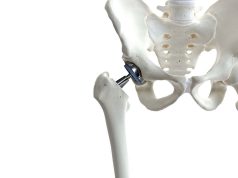Surgical correction based on high probability of repair linked to improved survival
MONDAY, Aug. 17, 2015 (HealthDay News) — Excess postoperative mortality and morbidity is seen with use of guideline-based indications for mitral regurgitation surgery versus early surgery, according to a study published in the July issue of the Journal of Thoracic and Cardiovascular Surgery.
Maurice Enriquez-Sarano, M.D., from the Mayo Clinic in Rochester, Minn., and colleagues examined outcomes for 1,512 patients undergoing surgical correction of pure organic mitral regurgitation. Patients were stratified into class I triggers (heart failure symptoms, ejection fraction <60 percent, end-systolic diameter ≥40 mm [ClassI-T]; 794 patients), class II triggers based on clinical complications (atrial fibrillation or pulmonary hypertension [ClassII-CompT]; 195 patients), and early class II triggers based on a combination of severe mitral regurgitation and high probability of valve repair (ClassII-EarlyT; 523 patients).
The researchers identified the highest operative mortality with ClassI-T (1.1 versus 0 and 0 percent; P = 0.016). Compared with ClassII-EarlyT, lower long-term survival was seen for ClassI-T and ClassII-CompT (adjusted hazard ratios, 1.89 and 1.39, respectively). Age stratification, inverse probability weighting, and expected survival adjustment confirmed the postoperative excess mortality with ClassI-T and ClassII-CompT. ClassI-T and ClassII-CompT had high excess postoperative failure (adjusted hazard ratios, 2.49 and 1.98, respectively).
“The type of guideline-based indication for surgical correction of organic mitral regurgitation is associated with profound outcome consequences on long-term postoperative mortality and heart failure, despite low operative risk and high repair rates,” the authors write.
Copyright © 2015 HealthDay. All rights reserved.








